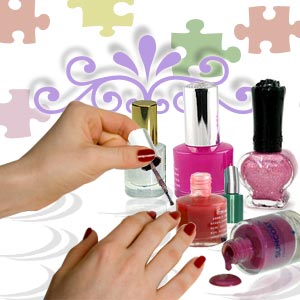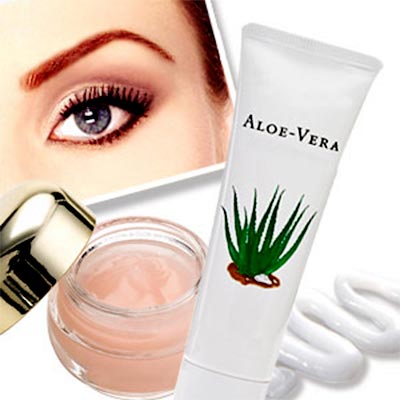Nail Polish

Cherry red, seductive coral, pleasing pink or shocking purple – nail polishes come in a range of shades and glitters. Nail polish has been used as nail ornamentation for centuries. Ancient Chinese and Egyptians used natural pigments to color their nails. Modern nail polishes are basically composed of nitrocellulose dissolved in a solvent and either left clear or colored with various pigments. You can get nail polish applied at a nail salon after your manicure and pedicure sessions. But there is no shortcut to healthy nails. Regular nail care goes a long way in keeping your nails healthy and attractive.
Nail polish
Choose a good quality nail polish. Various nail products such as nail removers and cuticle creams are toxic cosmetics. Formaldehyde and toluene are found in many nail products. Water-based nail enamels are also available. Hypoallergenic and unscented nail products are better suited for women with sensitive skin. Choose your nail polish color to suit your attire.
For regular wear, you can opt for classic shades of French manicure or even a clear nail polish – one that will form a protective layer and trap the moisture in. Choose a shade that enhances the beauty of your fingers and toes. Fair hands can take on most colors of nail polish. You can choose the all-time favorites like browns and reds or go wild with green and yellow. Nail polishes come in matte or glossy shades. Special nail enamel shades come with glitter.
- Remove all traces of leftover nail polish before you apply a fresh coat. Wet a cotton ball with nail polish remover and wipe off old nail polish firmly. You can also opt for ready-to-use nail polish remover pads. Non-acetone nail polish removers are easier on the nails. Acetone strips off the protective film from the nails and penetrates into the nail to displace the water.
- Replace the cap of the nail polish bottle tightly to prevent thickening and drying.
- Roll the bottle of nail polish between your hands to warm it up. Shaking it creates bubbles.
- Apply base coat of nail polish before you apply the nail enamel. A base coat acts as a barrier against staining of nails.
- Do not take out a huge dollop of nail polish. Instead take a small dollop of nail polish and adjust the side of the nailbrush to the right consistency.
- Apply 2 coats of nail enamel. Let the first coat dry thoroughly before applying the second coat.
- Apply nail polish in about 3 large strokes. Avoid too many small strokes as it leaves an untidy appearance. Apply nail polish from base of the nail to the tip.
- Applying a topcoat of nail polish will help keep the polish longer. It will prevent chipping of nail polish at the tips and aid in the quick drying and setting of the polish layers. A UV top coat is preferred by some who work outdoors.
- You can add length to short and broad nails by leaving a narrow strip on each side of the nail unpolished.
Nail salon
You can take your own manicure kit to a nail salon. If not, ensure that you visit a nail salon that cleans and disinfects its instruments after each use. Tools must be immersed in special sterilization products for a stipulated time period. Dirty equipment at a nail salon can put you at risk for hepatitis B and C. The manicurist must wash her hands before she attends to your nails. Clean towels, pedicure tubs, tissues and cotton balls are essential for maintaining hygiene. New emery boards must be used each time. Fresh soapy water must be used for each client. Avoid letting the nail salon staff to cut your nail cuticles too closely or cut corns and calluses.
Nail care
Take regular care of your nails with simple tips and you can sport healthy nails that you can be proud of. Nails absorb a lot of work and lose it just as quickly. It is essential to keep the nails well moisturized and hydrated. Regular use of cuticle oil will keep dry and ragged cuticles at bay. Nail strengthening creams can help in stimulating nail growth. Household cleaners and solvents can be damaging on the nails. Wear gloves while performing household chores or working in the garden. Excessive washing dries nails and may cause them to crack or split.
Dry and brittle nails can be indicative of deficiency of Vitamin A and calcium. White spots can develop on the nails if there is a deficiency of zinc. Protein deficiency manifests as white bands across the nails. Foods rich in sulfur and silicon such as broccoli and fish are good for your nails. Eating foods rich in biotin such as brewer’s yeast and whole grain and soy and including plenty of water in your diet works well for healthy nails. Nail care can be complemented with supplements of zinc and B vitamins.
Top of the Page: Nail Polish
Tags:#nail #nail salon #nail care #nail polish
 Beauty
Beauty Hair Loss Remedy
DIY Lip Care
Peel Off Lip Color
Moroccan Oil Treatment
Dead Sea Black Mud
Nail Polish Pen Set
Eyebrow Shaping
Long Eyelashes
Tanning Salon
Pedicure
Fish Pedicure
Nail Marbling
Nail Polish
Acrylic Nail
Yellow Nails
Hand Creams
Peeling Cuticles
Cosmetic Surgery
Makeup Foundation
Whiten Teeth Naturally
Tooth Whitening
Salon Spa
Skin Care
Aging Gracefully
Facial Hair Removal for Women
Face Mist
Fragrance
Long Lasting Lipstick
Body Art
Manicure Tips
Cellulite Treatment
Mesotherapy
Colored Contact Lens
Crow's Feet
Acupuncture and Weight Loss
Top of the Page: Nail Polish
Popularity Index: 102,202

